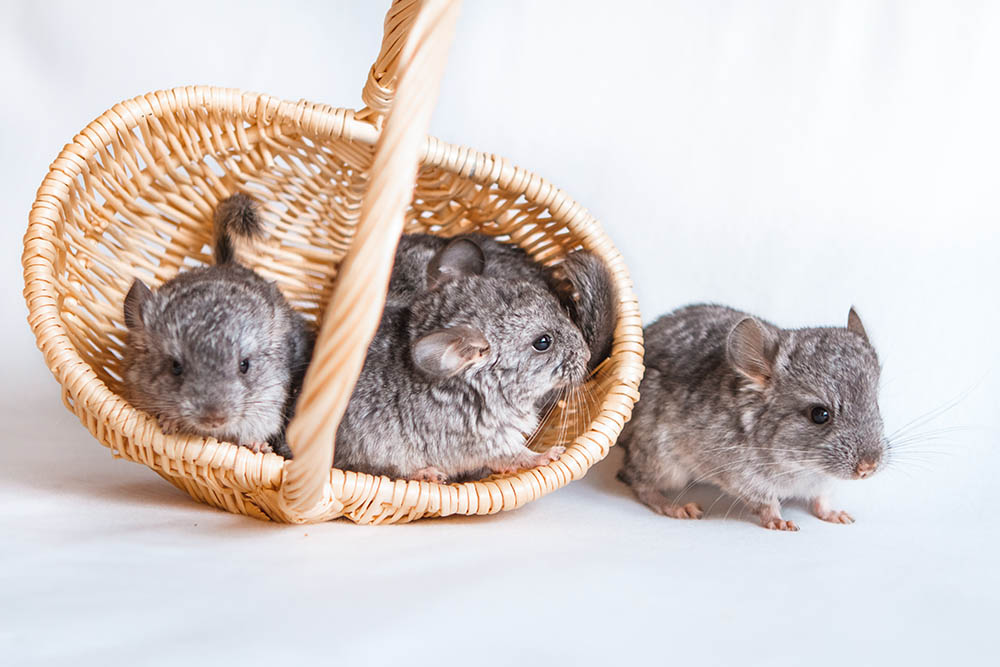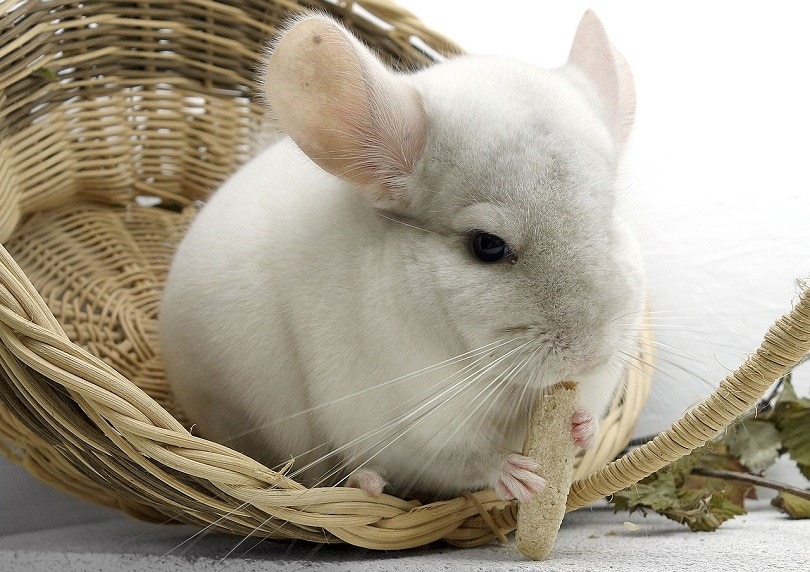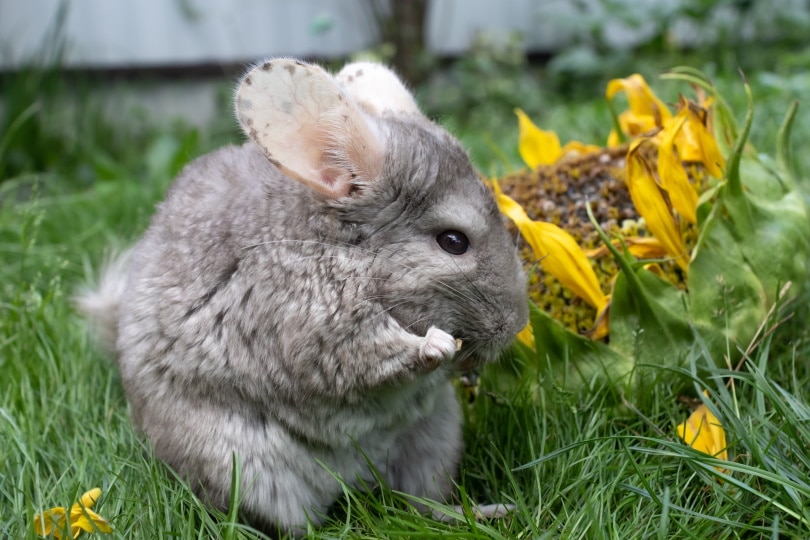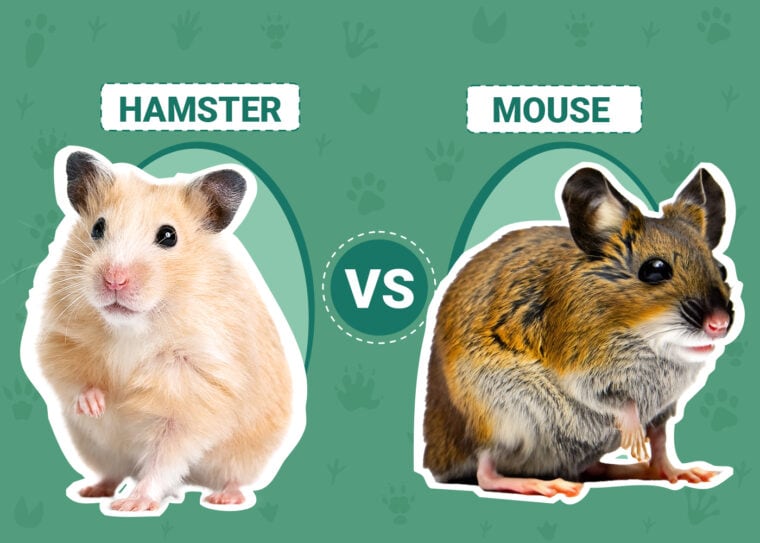
Click to Skip Ahead
Hamsters and mice are two of the most popular small rodent pets, each with their own unique charm and characteristics that cater to different preferences and lifestyles. These tiny creatures share common ancestry but have diverged into distinct species with variations in behavior, care requirements, and suitability as pets.
Hamsters are often recognized for their adorable plump cheeks and solitary nature, while mice are celebrated for their social tendencies and agility. Whether you’re considering a hamster or a mouse as your new furry friend, this comparison will shed light on the key aspects of both pets, enabling you to choose the perfect companion for your lifestyle!
Visual Differences
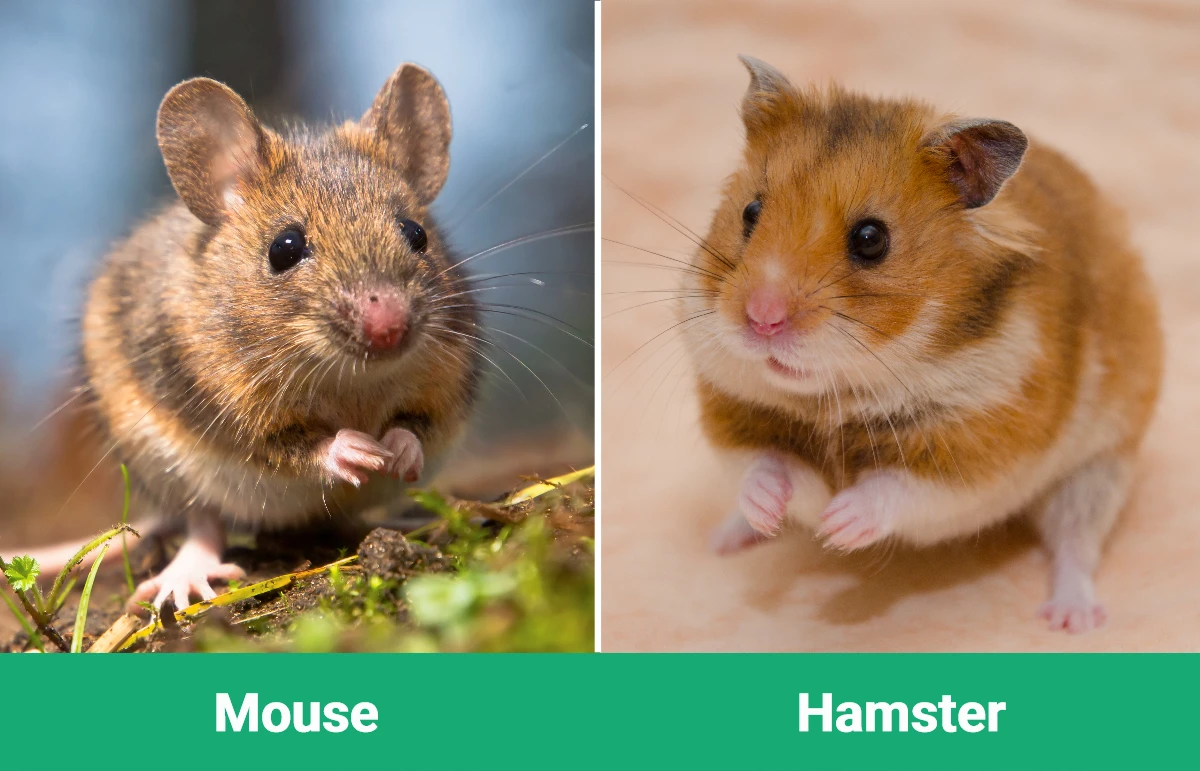
At a Glance
Hamster Overview
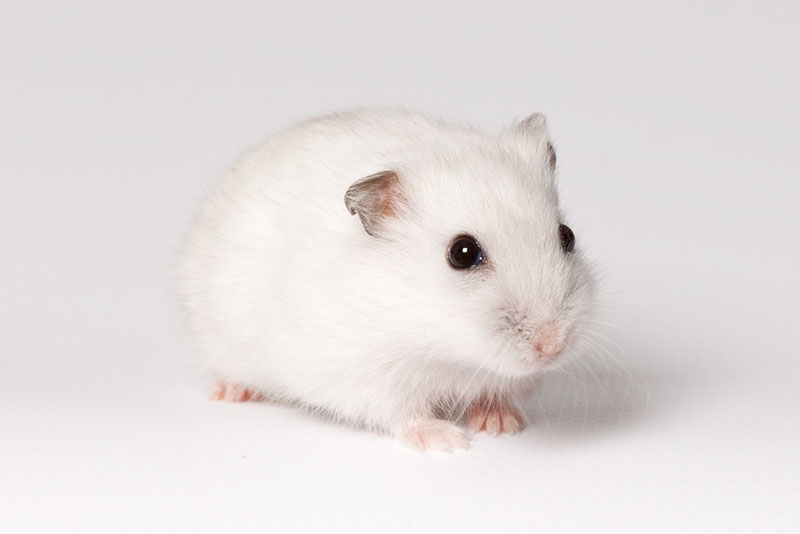
Hamsters are incredibly popular as pets for a variety of reasons. These small rodents are known for their compact size, making them ideal for people with limited living space. Their adorable appearance, characterized by round bodies and cheek pouches that they use to store food, also adds to their appeal.
Hamsters are relatively low-maintenance pets, which makes them suitable for both experienced pet owners and those new to caring for animals. They thrive in solitary environments, so you typically only need to keep one hamster per enclosure, reducing the potential for conflicts or social issues.
Hamsters are also known for their gentle and docile nature, making them excellent companions for children and adults alike. Their nocturnal behavior means they are most active during the evening and night, which can be convenient for individuals with busy daytime schedules. While they enjoy the company of their owners, hamsters do not require as much attention as some other pets, making them a suitable choice for those seeking a pet that offers companionship without overwhelming demands.
Personality and Character
Hamsters are often anecdotally characterized by their sweet and endearing personalities. They are generally gentle and easygoing creatures, making them approachable and enjoyable companions for people of all ages.
Hamsters are naturally curious, and their inquisitive nature leads them to explore their surroundings with enthusiasm. While they are known for their solitary lifestyle, they can still develop strong bonds with their owners through regular interaction and gentle handling.
These small, furry friends may become remarkably affectionate with time, bringing joy and warmth to the lives of those who choose to welcome them into their homes.

Housing
Hamsters have specific housing requirements that are essential for their health and well-being. A proper hamster enclosure should be spacious enough to allow them to exercise and explore comfortably.
A minimum cage size of 360 square inches of floor space is recommended, with plenty of opportunities for climbing, digging, and hiding. Wire cages with narrow bar spacing are suitable to prevent escapes, but they should be paired with a solid bottom to protect your hamster’s feet. Hamsters are known to burrow, and their welfare is enhanced if they have bedding deep enough to burrow.
Bedding material should be non-toxic, absorbent, and provide a comfortable substrate for burrowing, with options like aspen shavings, paper-based bedding, or coconut coir being popular choices. Hamsters also require hideouts or tunnels to create a sense of security and privacy, and exercise wheels, toys, and chew items to keep them mentally and physically engaged.
Training and Exercise
Hamsters are not typically trainable in the same way that dogs or even some other rodents can be, but they can learn to recognize their owners and become comfortable with gentle handling through positive reinforcement and consistent interactions. Patience and a calm demeanor are key when trying to establish a bond with a hamster.
As for exercise, hamsters have an inherent need for physical activity. Providing a hamster wheel is essential to allow them to run and expend energy, as they can cover several miles in a single night. Additionally, offering a variety of toys and tunnels in their habitat encourages mental stimulation and exploration.
Outside-the-cage playtime in a secure, hamster-proof area can also help satisfy their need for exercise and mental engagement. It’s crucial to ensure that they can’t escape or injure themselves during these out-of-cage adventures. They should not be placed in a hamster ball when outside their enclosure, as this often leads to injuries.
In addition, the balls offer very poor ventilation and are not considered humane, as a hamster often becomes quickly disoriented once placed in a ball. They are unable to stop their movement within a ball, and therefore cannot prevent the ball from slamming into objects.
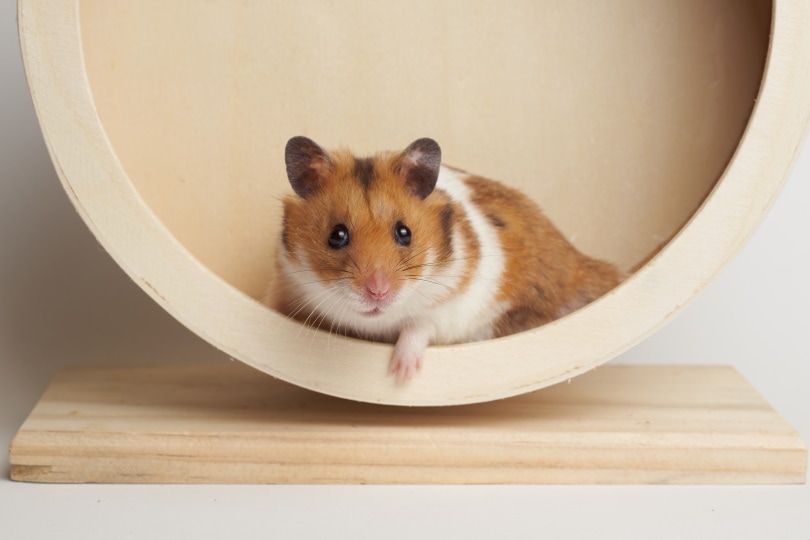
Health
Maintaining the health of a hamster involves several crucial considerations. Regular observation of your hamster’s behavior and appearance is key to identifying any signs of illness early. Hamsters can be prone to various health issues, including dental problems, respiratory infections, skin conditions, and gastrointestinal disorders.
Providing a balanced diet that includes high-quality hamster pellet food, fresh vegetables, hay, grasses, and occasional treats is essential to prevent nutritional deficiencies and obesity. Ensuring clean and hygienic living conditions, including regular cage cleaning and maintaining appropriate bedding, helps prevent infections and skin irritations.
Hamsters need access to fresh water at all times, so ensuring a clean and non-leaking water bottle is vital. If you notice any changes in your hamster’s eating habits, activity level, or appearance, consulting a veterinarian with experience in small animal care is advisable, as prompt medical attention can often prevent more serious health issues from developing.
Regular vet check-ups, even when your hamster appears healthy, can also be beneficial for early disease detection and overall well-being.
Suitable For:
Hamsters are suitable for a wide range of pet owners, from families with children to individuals living in small spaces. Their gentle temperament and low-maintenance care requirements make them a great choice for those looking for a first-time pet or seeking a companion without the demands of larger animals. Their compact size and quiet nature make them suitable for apartment living and shared spaces, while their nocturnal activity aligns well with people who have daytime commitments.
Mouse Overview
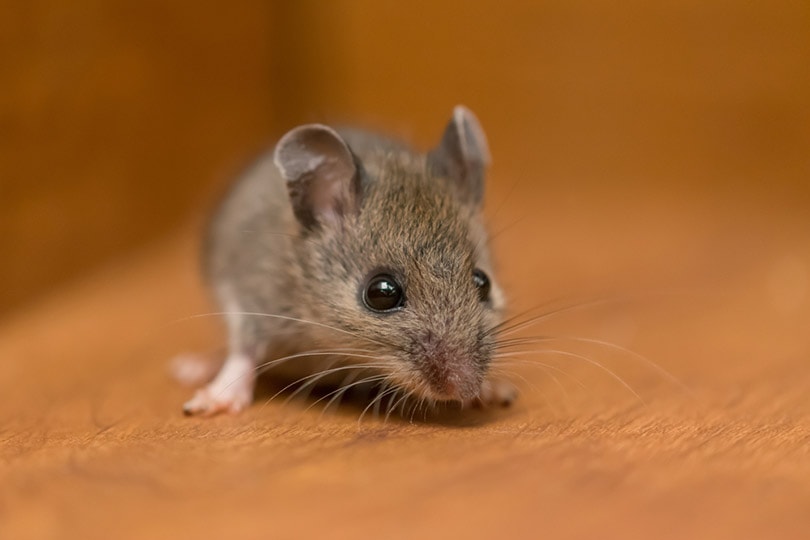
Mice make wonderful and often underestimated pets for those seeking the joys of small rodent companionship. These tiny pets are highly adaptable and can thrive in a variety of living environments, making them suitable for individuals living in apartments or homes with limited space. Unlike their solitary hamster counterparts, mice are highly social animals and are best kept in same-sex pairs or small groups to prevent loneliness and encourage their natural behaviors. Observing their playful interactions and close-knit relationships can be a source of endless entertainment and heartwarming moments.
Mice are also known for their intelligence and ability to form bonds with their human caregivers. They can be tamed and trained to some extent, with many mice learning to recognize and respond positively to their owners. However, they require diligent and patient handling to build trust and ensure their comfort with human contact. Providing a clean and spacious cage with various toys and opportunities for exercise and exploration is essential to cater to their active nature.
Personality and Character
Mice are beloved for their charming and inquisitive personalities. They are naturally social creatures, known for their playful and interactive behavior, which often includes grooming one another, wrestling, and exploring their environment with boundless curiosity.
Mice can quickly form strong bonds with their human caregivers, especially when handled gently and regularly, and they often display affection by climbing onto their owners’ hands or shoulders. Their intelligence and adaptability make them quick learners, and they can be trained to perform tricks or respond to basic commands.
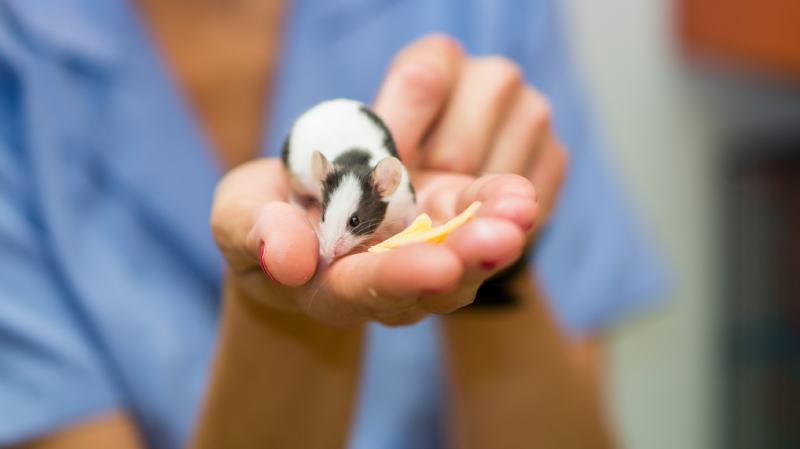
Housing
Mice have specific housing requirements that are vital to their health and well-being. An appropriately sized cage with ample space for movement and activity is essential, and a minimum floor space of around 200 square inches is recommended for a pair of mice, with additional space for each additional mouse. A multi-level cage with ramps, platforms, and tunnels can provide mental stimulation and exercise. The cage should be escape-proof, as mice are expert climbers and can fit through small openings.
Proper bedding material, like paper-based or aspen shavings, should be provided for burrowing and nest-building, and it should be kept clean to prevent health issues. Mice also require a quiet, draft-free location away from direct sunlight, and a temperature range of 65–75°F (18–24°C) is suitable.
Training and Exercise
Mice are naturally active and agile creatures that require regular exercise and mental stimulation to stay healthy and happy. Providing a cage with ample space for exploration, multi-level structures, and tunnels can help satisfy their need for physical activity and environmental enrichment.
While mice may not be as trainable as some other pets, they can learn to recognize their owners and respond positively to gentle handling and interactions. Incorporating playtime outside of the cage in a safe and secure area allows them to stretch their legs and provides mental stimulation.
Additionally, offering toys, tunnels, and items that encourage climbing, such as ropes and ladders, can keep them engaged and active. Ensuring their environment is filled with stimulating activities and challenges can help prevent boredom and promote the overall well-being of these charming small pets.

Health
Maintaining the health of pet mice involves several important considerations. Regular observation of their behavior, appetite, and physical condition is essential for early detection of any signs of illness or discomfort.
Like hamsters, mice are susceptible to a range of health issues such as respiratory infections, dental problems, and skin irritations. This means that maintaining a clean and hygienic living environment is crucial.
Offering a balanced diet that includes commercial mouse pellets, fresh vegetables, and occasional treats is essential to prevent nutritional deficiencies and obesity. Access to fresh water is also vital for their well-being.
Suitable For:
Mice are suitable for a wide range of pet owners, particularly those looking for small, sociable, and entertaining companions. Their friendly and inquisitive nature makes them a great choice for individuals, families, and even children, as long as there is proper adult supervision.
Mice are ideal for those with limited living space, as they don’t require much room and are relatively quiet. Their ability to form close bonds with their human caregivers adds an extra layer of charm to their suitability as pets, and they can bring joy and companionship to people seeking an engaging and affectionate animal companion. Furthermore, their low maintenance and affordable care requirements make them accessible to a wide demographic of pet enthusiasts, making mice a delightful option for those interested in sharing their lives with these adorable, small rodents.
Conclusion: Which Pet Is Right for You?
Both hamsters and mice offer unique qualities and characteristics that can make them wonderful additions to your life as beloved pets. Your choice between the two depends on your preferences, lifestyle, and what you seek in a small animal companion.
Hamsters are the epitome of low maintenance, with their solitary nature and relatively undemanding care requirements, making them ideal for individuals with limited space and those looking for an independent and gentle companion.
On the other hand, mice bring a social and interactive dimension to pet ownership, forming close bonds with their human caregivers and providing endless entertainment through their playful antics.
Ultimately, the decision comes down to your personal preferences and the time and effort you are willing to invest in nurturing your chosen pet. Whichever path you take, both hamsters and mice have the potential to bring joy, companionship, and heartwarming moments to your life as cherished animal companions.


